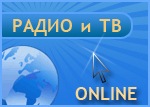Windows Subsystem for Linux (WSL) is a compatibility layer for running Linux binary executables (in ELF format) natively on Windows 10 and Windows Server 2019.
WSL provides a Linux-compatible kernel interface developed by Microsoft (containing no Linux kernel code), which can then run a GNU user space on top of it, such as that of Ubuntu, openSUSE, SUSE Linux Enterprise Server, Debian and Kali Linux. Such a user space might contain a Bash shell and command language, with native GNU/Linux command-line tools (sed, awk, etc.), programming language interpreters (Ruby, Python, etc.), and even graphical applications (using a X11 server at the host side). (wikipedia)
The hardware table has all been awarded the status of Certified or Ready for Ubuntu.
Ubuntu Tweak is an application to config Ubuntu easier for everyone. It provides many useful desktop and system options that the default desktop environment doesn’t provide.
As a Ubuntu user, you always get excited when you see something new in Ubuntu world. You play with new applications, new themes, new applets… After playing with them, you may find something break the desktop, and you don’t know how to recover to the original style.
That’s what the Desktop Recovery will help you.
Desktop Recovery is the tool integrated into Ubuntu Tweak to help people safely tweak with desktop settings, and never worry about how to go back.
It has three basic actions:
- Backup: backup the current settings, keep as many as backups you want;
- Recover: recover to the backup;
- Reset: even you don’t have any backup, you can also reset to the default settings;
And what items does Desktop Recovery can backup? Here’s it is:
- GNOME Desktop settings: Panel, Themes, Background;
- Application settings which use GConf: gedit, Compiz, Empathy, Nautilus… You know, almost every desktop applications;
- System components: Input method (ibus), network-manager, proxy…
You can see, Desktop Recovery covers almost everything of desktop/applications.
One thing You MUST know: it will only operate with the setting, not the files related with the setting. E.G. It will backup the setting about the background name, but not the real background file.
Install Ubuntu Tweak in ubuntu
Open the terminal and run the following commands
sudo add-apt-repository ppa:tualatrix/ppa
sudo apt-get update
sudo apt-get install ubuntu-tweak
ubuntugeek.com
How to remove the old kernel versions from ubuntu using ubuntu tweak
- Select “Package Cleaner” on the left and “Clean Kernel” from the right panel.
- Press the “Unlock” button at the lower right, enter your password.
- Select from the displayed list the kernel images and headers you wish to remove. The kernel in use is not listed.
- Press the “Cleanup” button at the lower right to remove the selected kernel images and headers.
ubuntugeek.com
UNetbootin allows you to create bootable Live USB drives for a variety of Linux distributions from Windows or Linux, without requiring you to burn a CD. You can either let it download one of the many distributions supported out-of-the-box for you, or supply your own Linux .iso file if you’ve already downloaded one or your preferred distribution isn’t on the list.
Open terminal.
Type echo PS1 to get current prompt line.
Type PS1=’something’ there something is
Read more…
Starting in Ubuntu 8.04, ubiquity (the ubuntu system installer) allows the user to install Ubuntu while preserving the /home directory. This allows you to reset your computer to default but to keep your personal files and configuration files. The point of ubiquity-preserve-home is that it’s supposed to work smoothly behind the scenes using Ubuntu’s Installer.
If you choose not to format the partition assigned to “/”, then everything on that partition that would cause problems for an Ubuntu installation will be removed (e.g. the contents of /boot, /etc, /lib, /usr, etc.), but /home and other unknown directories that might contain data will be preserved. Doing this does not require an explicit action by the user, other than choosing manual partitioning and *not* formatting the partition assigned to “/”. This may be used as a last resort to restore Ubuntu to default at the point of installation but will preserve the /home directory.
Ubuntu wiki
